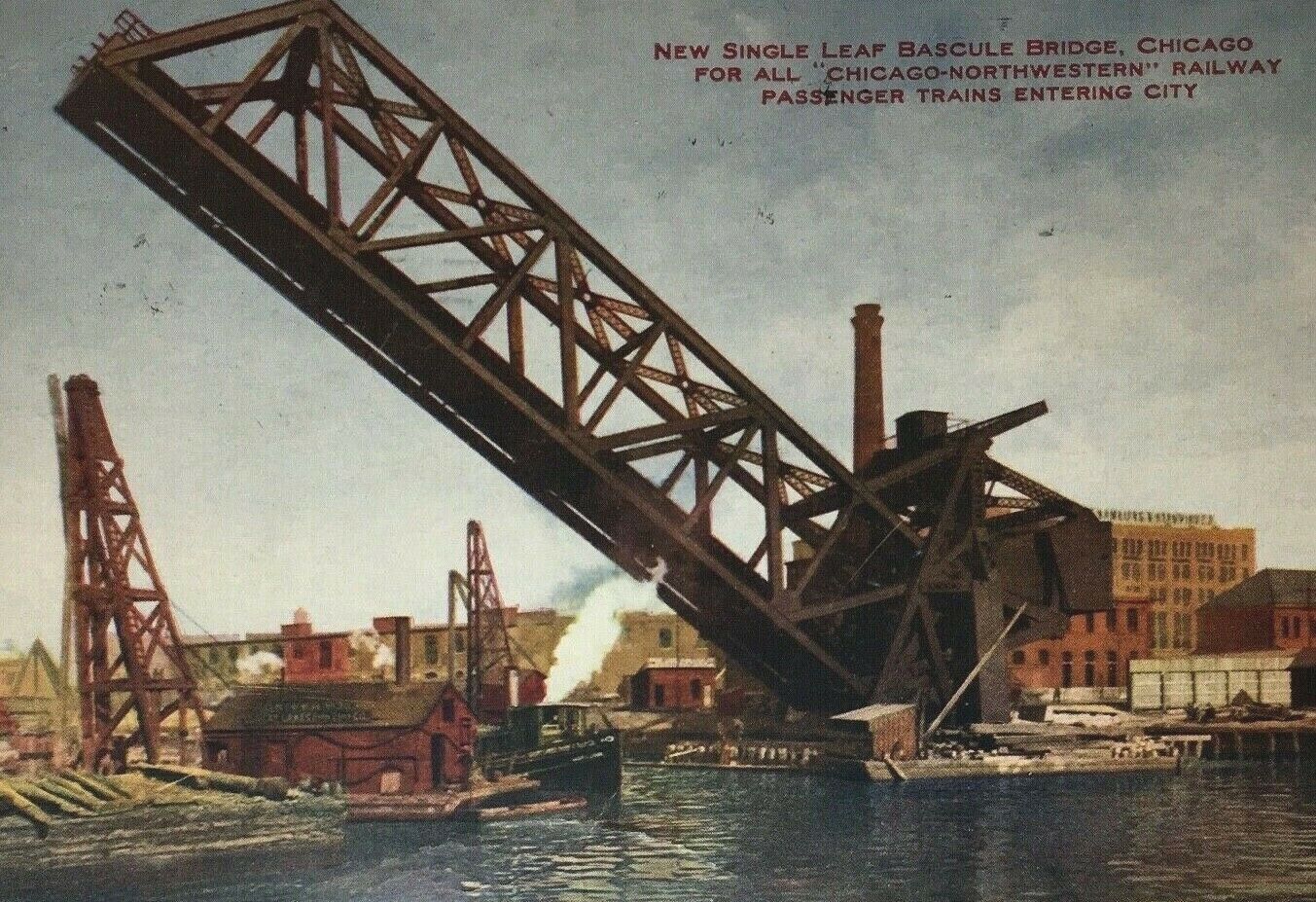This massive bridge is one of the most iconic bridges in Chicago, and thus was designated as a Chicago Landmark in December of 2007. It sits next to Kinzie Street, just north of Wolf Point.
When constructed, this double track bridge would be the heaviest and largest bascule leaf on any railroad bridge in the world. It is approached by a single deck girder span.
The bridge consists of a 7 panel, riveted Warren through truss on concrete substructures.
The bridge was designed by Joseph Strauss, a young engineer from Cincinnati, Ohio. Strauss was one of the first to revolutionize the bascule lift bridge.
This particular bridge follows unique design of trunnion bascule that Strauss used. Later bridges continued to evolve from this design. It would be constructed by the Toledo-Massillon Bridge Company of Toledo, Ohio.
Even more unique of this bridge is the counterweight. It is one of only a few in Chicago where the counterweight is above the ground.
In addition, the counterweight is not rigidly connected. This means that the counterweight moves independently of the bridge.
Despite the bridge being located at Carroll Street, it has always been known as the Wells Street Bridge and Kinzie Street Bridge to the railroad.
In addition, the bridge was originally supposed to have a parallel twin, to serve the Wells Street Station. However, when the new station and line opened in 1911, this structure became a freight only bridge, making the second bridge pointless.

Historic photo of the bridge
Most recently, it has served the Chicago Sun Times printing operation, which has since ceased using railroad service.
Each year, the bridge lowers once so Union Pacific, the current owners do not have to consider it abandoned. The bridge otherwise sits on raised position.
When this bridge was constructed in 1907, it replaced a swing bridge. Because of the tight space, the swing bridge needed to be converted to a bobtail type bridge to allow proper room to assemble the new bridge.
The swing bridge (1898) replaced the first all steel railroad bridge (1879), which replaced Chicago's first railroad bridge (1852). The 1898 bridge was later moved to Milwaukee, where it continued to stand until the late 1990s.
Overall, the bridge appears to be in good condition. The future of the structure is not certain.
The author has ranked this bridge as being regionally significant, due to the landmark status.
Photos of construction and assembly can be seen below. These photos were donated by the Chicago & North Western Historical Society.
The photo above is an overview.
| Upstream | MILW Kinzie Street Bridge |
| Downstream | Confluence with Main Stem of Chicago River |
Historic Photos from the Chicago & North Western Historical Society
